Build Stronger Patient Relationships: 3 Time-Smart Strategies
Enhancing Patient Care: 3 Time-Smart Ways to Build Stronger Patient Relationships
Why Building Stronger Patient Relationships Doesn’t Have to Take More Time
Limited time shouldn’t limit your ability to build stronger relationships with your patients. And it doesn’t have to.
By following these 3 simple strategies you can improve your patient relationships without adding a heavy burden to your already-full schedule of appointments, follow-ups, meetings, to-dos, continuing education, practice responsibilities, and more…
-
Improve Communication to Build Trust and Connection
Simple techniques to help patients feel heard, respected, and understood
Whether seeing patients in the office or via telehealth, good communication is foundational to building trust and making sure your patients feel heard, comfortable, and respected. Last month’s blog “Patient Communication: Best Practices for Building Trust and Rapport” outlined specific best-practice tips and non-verbal techniques to up-level your patient communications, including the American Medical Association’s R-E-S-P-E-C-T strategy. Invest the time to learn about these methods — whether you can spare 15 minutes or even carve out an hour or two to dive deeper when your schedule permits. When you put into practice what you learned with intention, the ROI will pay off almost immediately. Although this is a mostly one-and-done learning opportunity to build stronger patient relationships, revisiting what you learned and regularly brushing up your skills over time is not only smart but also recommended.
-
Keep it Simple: Speak Your Patients’ Language
Clear, jargon-free communication builds stronger patient relationships
You went to medical school, but your patients didn’t. You know this, of course. But do you remind yourself of it when you’re talking to patients? Chances are most of your patients don’t understand what might feel basic to you. And they shouldn’t need a thesaurus or Google to help them translate what you tell them.
Tricks of the trade to keeping it simple are avoiding medical jargon and acronyms right off the bat, as these are a foreign language to most patients. A recent study revealed physicians who communicated without jargon were perceived as more caring/empathetic and approachable. In addition, just say “no” to big words and any vocabulary that’s not commonly used. Experts advise using plain language and straightforward, practical information to explain diagnoses, medications, procedures, and recommendations.
Pro tip: Don’t skip the detail — go beyond the WHAT to include the WHY to ensure your patients fully understand what they need to know. Like the strategy to improve communication to build stronger patient relationships, this is more of an investment in your intention and mindset than it is an investment of time in your schedule.
-
Embrace Technology to Stay Connected and Accessible
Use patient-centric tech to enhance engagement and streamline care
Putting today’s patient-centric technologies in place — with the goal of building stronger relationships with your patients — admittedly requires research and implementation. But once up and running, you’ll realize the positive impact without a significant ongoing burden on your time. Today’s technology options can improve communication, streamline care, and foster stronger connections between you and your patients. From telehealth opportunities to patient portals to mobile health apps, what tools will help you help your patients? Is it efficiency they need? Or access? Consider your unique patient populations and what will not only be most useful for them, but also what they may be willing or able to manage.
For example, making telehealth an option for patients without reliable internet connection is not a benefit, but it could be a real advantage for a busy working parent who is already internet savvy. Not quite a set-it-and-forget-it strategy, adding technology will require ongoing system management as well as additional interaction from you or your staff — to develop telehealth procedures, or to respond to patient inquiries sent via a patient portal, for example. But over time adding technology will enhance more than it will distract, boosting accessibility, patient engagement, and patient satisfaction.
Stronger Relationships, Better Care — Without the Extra Time
Building stronger patient relationships doesn’t require a major overhaul of your schedule — just a shift in approach. By focusing on clear communication, simplifying the way you share information, and leveraging the right technology, you can deepen trust, improve outcomes, and make every patient interaction more meaningful. Small changes, when made with intention, can have a big impact on how your patients experience care.
Looking for more ways to enhance your connection with patients? Explore our resources or visit Patient Communication: Best Practices for Building Trust and Rapport for more.


